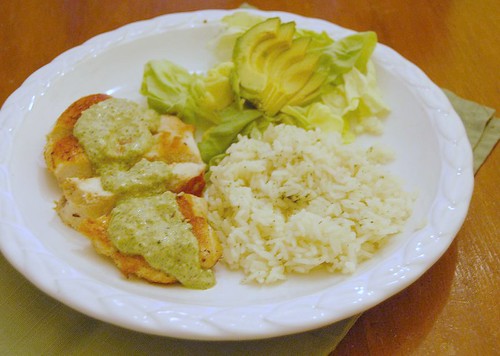
I really like spicy food, especially when it is seasoned with fresh chilis. There is an astounding variety of chilis, some so tiny that they are the size of a fingernail, and some longer than a hand. Chilis are from the genus Capsicum, which are members of the nightshade family. The smaller varieties are usually known as chilis and the larger ones are known as peppers (as in bell peppers).
Archaeologists believe that chilis have been in the human diet for about 10,000 years, and perhaps earlier, and there is evidence that humans domesticated them more than 6,000 years ago, as one of the very first cultivated crops. Many cultures around the globe have used chilis for medicinal and religious purposes, as well as for seasoning their food.
The heat in a chili is caused by the chemical capsaican and measured in Scoville Units, with bell peppers ranking at 0, jalapeños ranking between 3,000-6,000 and habañeros at 300,000. The hottest chili ever recorded in the Guinness Book of Records was a Jaga Jolokia measuring over 1,000,000 Scoville Units. Most of the capsaican in a chili is located in its veins and seeds, so by removing those before using, it is possible to reduce the heat. The oils containing the capsaican can remain on the skin for hours, so it is important to wear rubber gloves when working with chilis. There is nothing worse than rubbing your eyes after cutting jalapeños. Yes, I know from experience. Some folks swear by rinsing the hands in a mild bleach solution to rid hands of the oils, but I have never tried that.
Chilis can be used raw, dried, and roasted. They can be fried, stuffed, ground into a paste or pickled. Americans are very familiar with Tabasco sauce (cayenne peppers) and chili powder, which is a blend of dried chilis, cumin, garlic and other herbs. But there are so many other chili products widely available in the market now like pickled jalapeños, sambal-olek, and sriracha sauce, that are delicious and should be tried.
In the peak of summer I bought some tiny red and green Thai chilis that were fiery hot. At the farmers market this week, I bought a beautiful Pasilla chili. The Scoville Unit for such a chili is 2,500-5,000, so comparatively speaking, they have a warm heat but aren't particularly spicy. They are a deep, forest green and shiny, and measure about 3 inches wide and 4-5 inches long. In other regions around the country they are known as Poblano chilis. Mexicans use them for their delicious stuffed Chiles Rellenos, which is essentially a chili stuffed with cheese, then battered and fried. I roasted mine over an open flame then sautéed it with garlic and onion, finally pureeing it with cream to make a sauce for sauteed chicken breasts. It was mild, creamy and had a slightly nutty taste from roasting the pepper.

Chicken in Pasilla Cream Sauce
adapted from Everyday Food
1 Pasilla or Poblano Chili
1/2 C chopped onion
1-2 garlic cloves, minced
olive oil
1/3 C cream
salt and pepper
4 boneless, skinless chicken breasts
Roast the chili over an open flame or under the broiler until the skin is charred and blistered. Wrap in plastic wrap for 5 minutes then using a paper towel, rub the skin off. Seed and chop.
Meanwhile, saute onion and garlic over medium heat in a bit of olive oil until softened, about 5 minutes. Add chopped chili to pan and saute 2 minutes longer. Add cream and stir, scraping up all the delicious juices from the pan. Pour mixture into a blender or mini-prep and purée. Add salt and pepper to taste.
Wipe pan clean with paper towel and add a bit more olive oil. Sauté chicken over medium high heat for 5 minutes on each side until cooked through. Slice breasts and drizzle with Pasilla Cream sauce. Serve with rice and avocado slices.


















1 comment:
Fantastic recipe. Thanks for that!
Definitely be trying that this week.
Daniel
Post a Comment